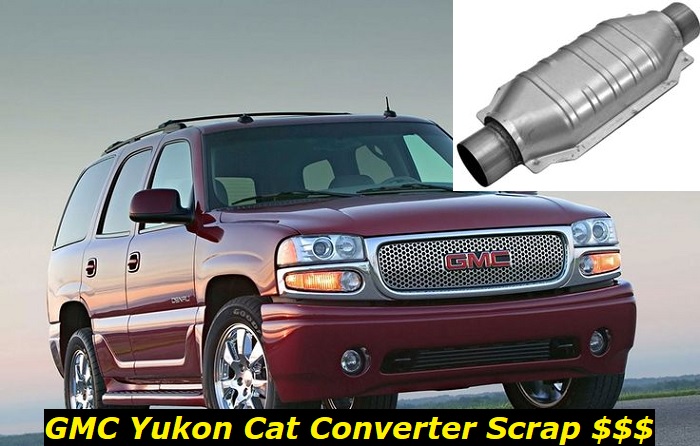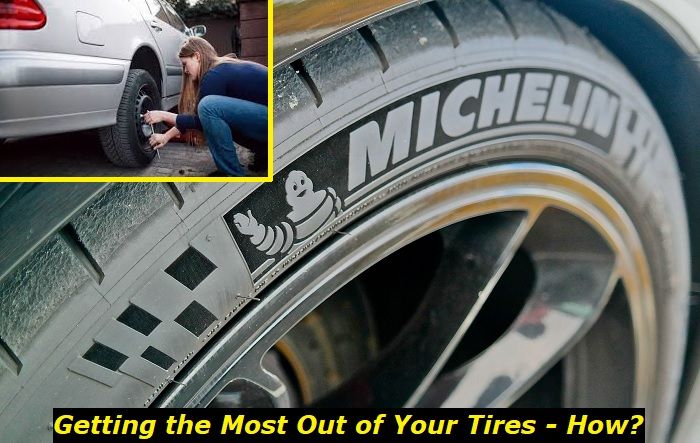Catalytic converters are one of the most valuable inventions in automobiles. They significantly cut the level of harmful emissions released into the atmosphere by being a component of a car's emissions system.
Catalytic converters are interestingly valuable not only for their functional purpose but also as a source of valuable materials due to the materials used in the manufacturing process. Removing the catalytic converter and selling it as a used part or for scrap is a great idea if you have a car that is unfit for sale and you have no choice but to sell it to a scrapyard.
The price of scrap catalytic converters varies greatly, from just $25 for an aftermarket cat to $1100 for large and rare models, while a typical GM converter costs about $200.

This article looks at the GMC Yukon catalytic converter as a function of what it does to a vehicle, the scrap prices, and what it's worth. Every GMC Yukon leaves the factory as a vehicle with a catalytic converter. It is a major component of every vehicle. The vehicle can run into issues that may render it useless, leaving the owner no choice but to sell it in parts. However, some owners usually decide to remove this component from a function, another controversial issue.
How Does a Catalytic Converter Work in Your Yukon?
The most crucial mechanical component of your Yukon's emissions system is the catalytic converter. It takes the emission gases produced as a byproduct of regular combustion and lowers them to healthy levels for humans and the environment.
Through chemical processes, the catalytic converter lowers harmful emissions. It is less damaging to the environment because it responds to harmful pollution in the exhaust system. The chemical process involves using a catalyst to burn off residual fuel vapor, transforming them into carbon dioxide, water, and heat.
Prior to the development of catalytic converters, the entire exhaust produced as a byproduct of internal combustion was released into the atmosphere. To make matters worse, most cars at the time used carburetor injection, a subpar system. Furthermore, although unleaded gas has been widely accessible since 1975, leaded gasoline was still in use until 1996 due to ineffective government regulation.
When these elements are present, toxic levels of urban congestion and significant environmental risk are created. Although switching to direct-injection methods allowed for more precise fuel delivery, higher performance, and lower emissions output, those factors alone were insufficient to meet the environmental standards.
Catalytic converters were invented in the mid-50s after it was clear that the automobile industry urgently needed an exhaust filter. They became integrated into law after an act in 1975 stating that all vehicles built must include a two-way catalytic converter. The catalytic converter has been a component for over 50 years and remains relevant.
Due to the number of valuable metals in them, catalytic converters are currently extremely valuable in the metal recycling sector. Valuable metals like platinum, palladium, rhodium, cerium, manganese, copper, nickel, iron, and copper are found in catalytic converters. Even so, some catalytic converters have different amounts of metals, which affects how much each one costs. Catalytic converters are mostly sold to a smelter or core buyer, so they can be recycled.
Platinum and palladium, which are found in this component, are also subject to chemical reactions.
How To Find Your GMC Yukon Catalytic Converter
The engine size and model year of your GMC Yukon will determine the exact location of the catalytic converter. But it's quite easy to find them. The exhaust system includes the catalytic converter itself. If you follow it, you'll eventually find it between the intake manifolds and the tailpipe.
You can almost always find an oxygen sensor somewhere around them and a heat shield surrounding them. The catalytic converter must be placed before the muffler. The muffler is another component you could easily mistake for the catalytic converter. However, the more familiar you get with GMC Yukon components, the faster it becomes to tell them apart.
Depending on the vehicle's year and make, the catalytic converter may be welded or bolted onto the vehicle.
How Do You Tell the Value of Your GMC Yukon Catalytic Converter Scrap?
The price of the catalytic converter for your Yukon depends on the engine size and model year. As a matter of fact, they are not that cheap, even as scrap. They are among the items on a car that are most frequently stolen. Catalytic converter thefts are popular occurrences, and several countries are setting up specific laws and regulations to crack down on crime.
Catalytic converters on some cars are pretty easy to steal, and unfortunately, some manufacturers don't use identifying markers like the car's VIN on the component. They typically cost more than $100, and a large one that fits behind a V8 can cost several hundred dollars.
A trip to the exhaust shop will frequently be necessary because replacing the catalytic converter frequently necessitates welding. The replacement of a cat converter is not cheap - it will take over $1,500 from your budget if you prefer OEM parts and over $500 if you are OK with aftermarket cats.
The average scrap value of a catalytic converter from your Yukon is closer to $200, with a maximum value of $280 at the moment. Some channels do not make this information public. However, if you want to look up the going rates in the scrap market, there are several sources online for that.
The valuable components and metals that your catalytic converter uses to catalyze harmful gases and chemicals give it value. The items in question include Platinum, Rhodium, Palladium, and other materials.
Platinum
Platinum is a shiny white metal used to create pieces of jewelry and other items. The catalytic converters contain the same metal and act as a defense against dangerous gases from the emissions systems. The platinum reacts chemically with the engine gasses as they enter the catalytic converter, separating many of the harmful particles from your exhaust systems.
During the recycling process, the platinum from your used catalytic converter is refined and reconstituted into pure metal. Platinum goes for about $31 per gram, and your average catalytic converter should be made of 3-7 grams of platinum.
Rhodium
Rhodium is another component found in your Yukon converter. The primary function of rhodium is to work with platinum or palladium to purify and filter the air that enters your converter.
Rhodium and palladium together will specifically increase palladium's capacity to eliminate toxins.
It is present in a catalytic converter in relatively small quantities. You will find a gram or two of Rhodium, but its price is insanely high today.
Palladium
If you own a luxury car, chances are very high that the catalytic converter has palladium which can be mined and recycled for some decent profit.
It's not that easy to take Palladium out of the converter. For this, the recycling company will use a couple of professional equipment units to heat the metal and melt it out. This may cost a lot because plenty of energy is required.
Any other expensive materials?
Other materials include ceramic and metal meshes and metal shielding. Despite being one of the least valued materials in a scrap catalytic converter, ceramic meshes are excellent at catching exhaust gases. They are less valued because they are more difficult to recycle and there is no value in this material.
The metal shielding makes up about 80% of the catalytic converter's mass and is very cheap because it is manufactured from a thin sheet of steel. The shielding envelops and shields the interior of your catalytic converter and is fairly easily accessible in the scrap market.
Conclusion
The total estimate you can get from your catalytic converter would depend on each available case. GM Yukon catalytic converters are pretty valued cats, but they are still subjected to the same market conditions.
We hope you find this article useful in helping you learn the value of your GM Yukon catalytic converter scrap.
About the authors
The CarAraC research team is composed of seasoned auto mechanics and automotive industry professionals, including individuals with advanced degrees and certifications in their field. Our team members boast prestigious credentials, reflecting their extensive knowledge and skills. These qualifications include: IMI: Institute of the Motor Industry, ASE-Certified Master Automobile Technicians; Coventry University, Graduate of MA in Automotive Journalism; Politecnico di Torino, Italy, MS Automotive Engineering; Ss. Cyril and Methodius University in Skopje, Mechanical University in Skopje; TOC Automotive College; DHA Suffa University, Department of Mechanical Engineering






Add comment